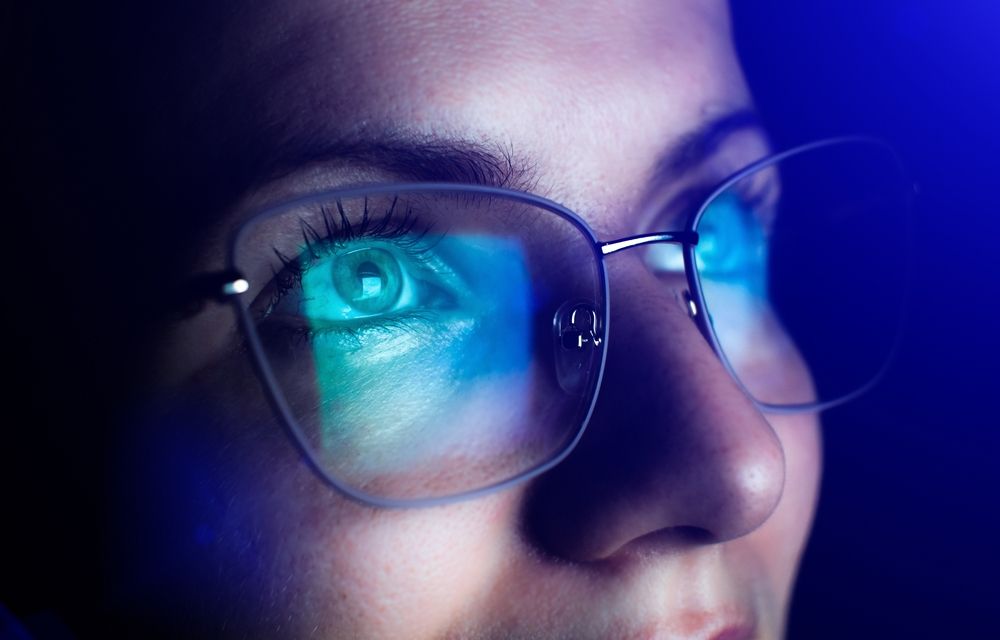In today’s screen-saturated environment, blue light has become a common concern for both patients and eye specialists. As we spend more time on smartphones, computers, and LED-lit devices, the long-term effects of blue light exposure on eye health are under increased scrutiny. While natural blue light from the sun helps regulate our sleep and circadian rhythms, excessive exposure to artificial blue light—especially during evening hours—can disrupt those systems and contribute to eye discomfort.
Dr. Abed Namavari of Colorado Eye Clinic in Greenwood Village, Denver, notes that many patients present with eye strain, blurred vision, and symptoms of dry eye that are linked to prolonged digital exposure. The issue isn’t solely about light intensity, but also about proximity and duration. Screens are typically held close to the face, and the cumulative effect of staring at them for hours without blinking adequately creates a perfect storm for ocular irritation.
How Blue Light Impacts the Eyes
Blue light is a high-energy visible (HEV) wavelength that penetrates deeper into the eye than other types of visible light. Unlike UV rays, which are mostly absorbed by the cornea and lens, blue light can reach the retina. Over time, this exposure may contribute to retinal stress, although the extent of long-term damage is still under study. What is certain, however, is that blue light contributes to digital eye strain—a group of symptoms that include dryness, fatigue, and visual fluctuations.
One major concern is how blue light affects tear film stability. Patients who experience dry eye are particularly vulnerable, as excessive screen time often reduces blink rate and leads to faster tear evaporation. Blue light exposure, especially in low-light environments, has also been associated with increased oxidative stress in retinal cells, potentially accelerating age-related changes. Dr. Namavari emphasizes that while blue light is unlikely to cause permanent damage in small doses, constant and unprotected exposure warrants both behavioral and clinical intervention.
The Role of Regular Eye Exams in Blue Light Management
An annual or bi-annual eye exam is one of the most effective ways to assess how blue light exposure is impacting your eyes. Many patients who experience symptoms like blurred vision or dryness don’t realize these may be tied to their digital habits. During an eye exam, Dr. Namavari evaluates not just your vision clarity but also your eye surface, tear film quality, and retinal health. These comprehensive assessments help identify early signs of strain or imbalance before they develop into more persistent issues.
In the context of blue light, eye exams also provide an opportunity to discuss preventive tools. Blue-light-blocking lenses, for example, can filter out harmful wavelengths and reduce strain without affecting your color perception. Specialized coatings can be added to prescription glasses, and for those without vision correction needs, plano (non-prescription) blue-light glasses offer protection as well. Additionally, exam findings might reveal that a patient’s dry eye condition is exacerbated by environmental exposure and digital behavior—making targeted treatment more effective.
Blue Light and Dry Eye: A Dual Challenge
Dry eye and blue light exposure often go hand in hand, especially in high-tech work environments. The dry, arid climate of Denver adds another layer of complexity, as environmental factors already predispose many to ocular dryness. When combined with screen time, these conditions create a recurring cycle of irritation and visual discomfort. Patients with mild dry eye may notice increased blinking or tearing at first, but chronic exposure can lead to persistent dryness, blurred vision, and sensitivity to light.
Dr. Namavari explains that the key to managing both issues is to treat them together. Using artificial tears can help replenish lost moisture, but that alone isn’t enough. Behavioral strategies, such as the 20-20-20 rule—looking 20 feet away every 20 minutes for 20 seconds—can reduce strain and help encourage blinking. Humidifiers, eyelid hygiene, and omega-3 supplements also support tear production and reduce inflammation. Combined with blue light filters, these approaches create a comprehensive plan for maintaining comfort throughout the workday.
Lifestyle Adjustments That Make a Difference
Modifying your environment and habits can significantly ease the impact of blue light on your eyes. One important change is screen positioning. Your screen should be slightly below eye level and about 20–28 inches away from your face. This position helps keep your eyelids naturally lowered, reducing the surface area exposed to air and minimizing tear evaporation. Adjusting screen brightness to match the ambient light in the room can also prevent overstimulation.
Another helpful adjustment is activating night mode or blue light reduction settings on devices. Most smartphones, tablets, and computers offer these features to reduce HEV light output, especially in the evening. This not only minimizes eye strain but may improve sleep quality as well. Dr. Namavari often reminds patients that screen behavior in the hour before bed has a direct impact on melatonin production, which is why eye discomfort and poor sleep often go hand in hand in digital-heavy lifestyles.
Specialized Eye Care for Screen-Heavy Lifestyles
Colorado Eye Clinic offers personalized care for patients affected by digital eye strain and dry eye. Dr. Namavari stays at the forefront of ophthalmic research to provide evidence-based solutions for patients in Greenwood Village and the greater Denver area. In addition to standard eye exams, the clinic offers diagnostics for tear quality, meibomian gland function, and ocular surface inflammation. These tools allow for a targeted approach when blue light is part of the root problem.
Treatment options may include prescription anti-inflammatory drops, punctal plugs to retain moisture, or in-office thermal therapies to restore healthy oil flow in the eyelids. These treatments, when paired with environmental management and digital eye habits, offer long-term relief and protection. Whether you’re a student, remote worker, or professional navigating screen-intensive tasks, Colorado Eye Clinic can help you find a sustainable solution.
The Future of Eye Health in a Digital Age
As technology continues to evolve, our relationship with screens—and the light they emit—will only deepen. That’s why proactive care and awareness are so important. Eye health isn’t just about seeing clearly; it’s about preserving comfort, productivity, and quality of life in the face of modern challenges. Dr. Namavari encourages patients not to wait until symptoms are disruptive. Instead, regular exams, early lifestyle adjustments, and proper screen hygiene can serve as preventative tools to safeguard your long-term vision.
For residents of Greenwood Village, Denver, and nearby communities, Colorado Eye Clinic remains a trusted source for compassionate, forward-thinking eye care. Whether you’re managing dry eye, digital eye strain, or are simply due for an exam, Dr. Namavari and his team are here to guide you through every stage of visual wellness.
Resources
Lin, J. B., Gerratt, B. W., Bassi, C. J., & Apte, R. S. (2017). Short-Wavelength Light Sensitivity in the Human Retina. Investigative Ophthalmology & Visual Science
Sheppard, J. D., et al. (2020). A Comprehensive Review of the Burden of Dry Eye Disease in the United States. Clinical Ophthalmology
Rosenfield, M. (2011). Computer Vision Syndrome: A Review of Ocular Causes and Potential Treatments. Ophthalmic and Physiological Optics

